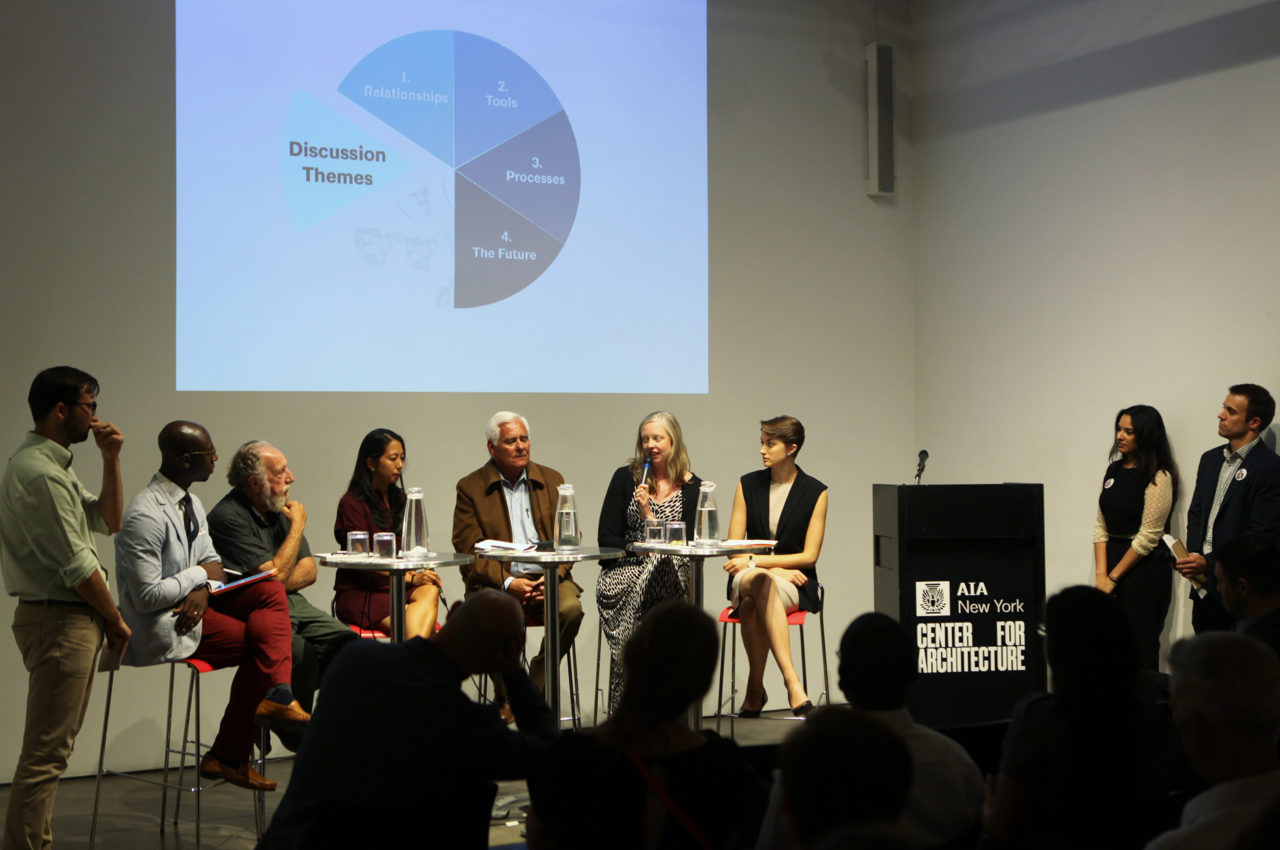by: Michael Caton, Jack Dinning, Daniel Horn, Shilpa Patel And Jenna Wandishin
On 09.25.17, the first of two public events of AIANY’s Civic Leadership Program (CLP), “Of, By, and For The People: Grassroots Movements and Policy Transformations,” highlighted the work of four practitioners from across the country, broadening the audience’s understanding of what it means to be a Citizen Architect and how this can apply to our own professional journeys.
AIA defines “Citizen Architect” as a design professional who utilizes his or her expertise towards the efforts of local, state, and federal issues in advocating for issues related to community, resiliency, and the built environment.
Five of AIANY’s Civic Leaders, Michael Caton, Jack Dinning, Daniel Horn, Shilpa Patel, and Jenna Wandishin, were joined by Ron Shiffman, Professor Emeritus at Pratt Institute School of Architecture and Co-founder of the Pratt Center for Community and Environmental Development; Suzanne Nienaber, Director of Partnerships at the Center for Active Design; Esther Yang, Design Director at the City of Detroit Department of Planning and Development; and Jack Matthews, AIA, Former President of AIA San Mateo and City Council Member and Former Mayor of San Mateo, California. Each speaker presented a specific project or initiative that shed light on how their career has expanded from that of a traditional practicing architect or urban planner toward a civic-minded professional.
The second portion of the program, a panel discussion moderated by the CLP, focused on relationships, tools, processes and the future. When the panel was asked to provide an overview of how their interests led to their further involvement in civics, Yang summarized that it is somewhat innate to the individual to have the desire to push their role as “design professional” to be for the greater, common good.
The panel advised that young professionals can become more civically involved by forming relationships with those at varying power levels of decision-making. They reminded the audience to capitalize on their toolsets and creativity to drive decisions forward. Audience members prodded the panelists for their opinions on the potential outcomes of having an architect in political, elected roles, and for the reasons why so few architects are currently engaged in this manner. Shiffman countered that perhaps it is not the push for an architect in government where our focus should be placed, but rather in encouraging all design professionals to be more civically minded on a local level, in their own communities and networks, for greater impact.
The evening concluded with the understanding that how we define Citizen Architect is critical to our efforts toward advocacy. For some, the design world and public policy were never mutually exclusive.








